
Advisory: Be careful of what you read on social media. The algorithms used by these platforms have no regard for Biblical truth. They target your emotions to keep you engaged on their site so their advertisers can drop more ads. These platforms exist to enrich their stockholders. Consider God’s promise to Believers in James 1:5, “If any of you lacks wisdom, you should ask God, who gives generously to all without finding fault, and it will be given to you.”
Featured Story
The Birth Pains Are Growing Stronger,God Hates Injustice…
The God who loves what is good must not love what is evil. He must not even be ambivalent toward what is evil, what is harmful, what is destructive. He must hate it. The God of the Bible reveals himself as a God of love. But he also reveals himself as a God who hates. We have been looking at verses where the Bible employs words like “hate,” “abomination,” and “detestable,” and have seen that God hates idolatry and God hates sexual immorality. Today we turn our attention to this: God hates injustice.
God Hates Injustice
God rules this world, and he rules it an injustice. “Righteousness and justice are the foundation of your throne; steadfast love and faithfulness go before you” (Psalm 89:14). God delegates authority and responsibility to us, beings made in his image, and he expects we will express justice on his behalf. “By me kings reign and rulers decree what is just,” (Proverbs 8:15) and “He has told you, O man, what is good; and what does the Lord require of you but to do justice, and to love kindness, and to walk humbly with your God?” (Micah 6:8).
According to Gregg Allison, justice is “fairly giving people what they are due, especially with respect to the administration of law.” The Bible often refers to a specific kind of justice, social justice, which is “the fair distribution of economic means, educational prospects, political influence, and other such opportunities within a community.” The Old Testament required the nation of Israel to care for the weak, the vulnerable, the destitute. It required its rulers to govern equitably, according to the law of God. Any failure to do so was a grave injustice and brought the threat of God’s judgment. Source
Where you find the laws most numerous, there you will find also the greatest injustice.”
– Arcesilaus, Greek philosopher and student of Plato on power and personal sovereignty
There are no two ways about it: The United States of America and its 50 state governments love putting people in prison.
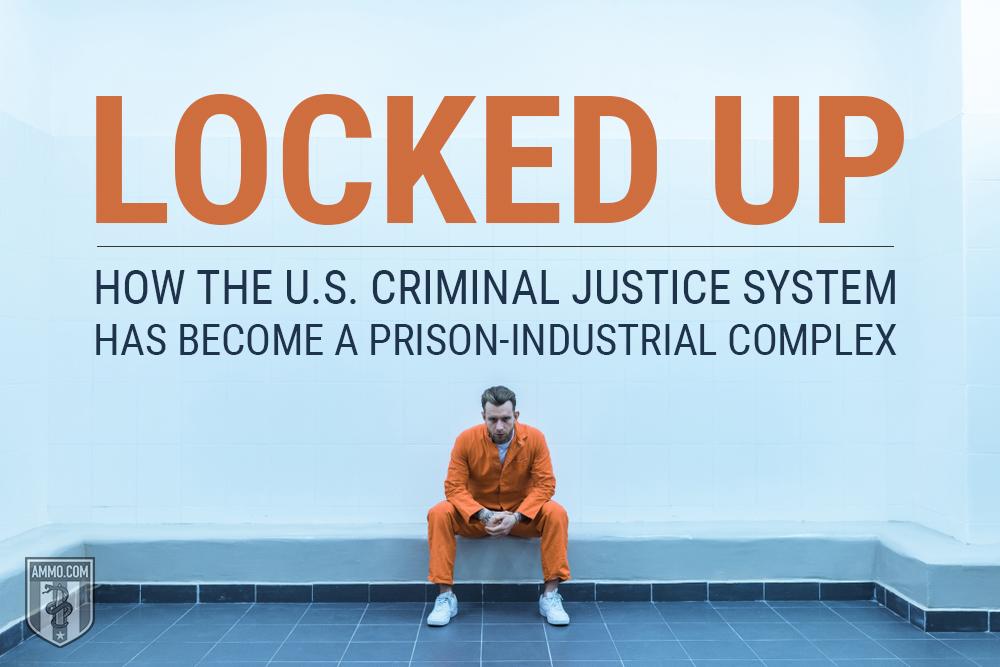
The U.S. has both the highest number of prisoners and the highest per capita incarceration rate in the modern world at 655 adults per 100,000. (It’s worth noting that China’s incarceration statistics are dubious, and they execute far more people than the United States. Indeed, the so-called People’s Republic executes more people annually than the rest of the world combined.) Still, that’s more than 2.2 million Americans in state and federal prisons as well as county jails.
On top of those currently serving time, 4.7 million Americans were on parole in 2016, or about one in 56. These numbers do not include people on probation, which raises the number to one in 35. Nor does it include all of the Americans who have been arrested at one time or another, which is over 70 million – more than the population of France.
For firearm owners, in particular, the growth in this “prison-industrial complex” is troubling because felons are forbidden from owning firearms and ammunition under the 1968 Gun Control Act. As the number of laws has grown and the cultural shift for police has gone from a focus on keeping the peace to enforcing the law, more and more Americans are being stripped of their 2nd Amendment rights (not to mention other civil rights like voting – as of 2017, 6.1 million Americans cannot vote because of their criminal records). All told, eight percent of all Americans cannot own firearms because of a felony conviction.
For American society as a whole, the prison-industrial complex has created a perverse incentive structure. Bad laws drive out respect for good laws because there are just so many laws (not to mention rules, regulations, and other prohibitions used by federal prosecutors to pin crimes on just about anyone). How did we get here?
History of Incarceration in the U.S.
United States law is, of course, based on English common law. Thus, no history of incarceration in the United States can start without first discussing the history of incarceration in the Kingdom of England and later the United Kingdom of Great Britain.
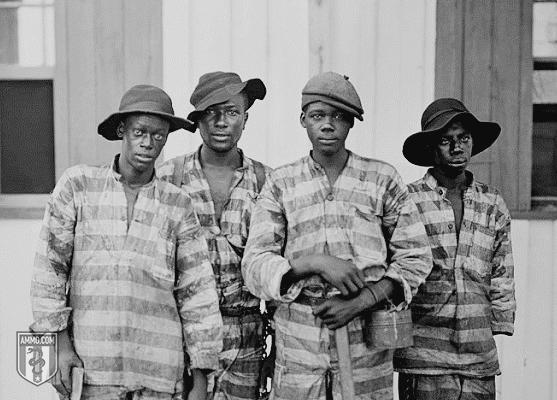
The prevailing notion of where crime came from in the old country and the colonies was idleness. Punishments often involved sending criminals to workhouses, which were quite distinct from the prisons we know today. Rehabilitation and reform weren’t strong currents in English and later the British penal system until the 1700s. Reformers sought to improve the criminal and to make him not want to offend.
Another historical fact worth noting is that incarceration is a relatively recent innovation in punishment. Historically, criminals were punished by shaming, corporal punishment, mutilation, exile, and death. The purpose was generally not to make the criminal better, but to deter him from offending again while simultaneously providing the community with some awareness of his crimes for the purpose of allowing them to take measures to protect themselves (for example, branding a “B” on the forehead of a burglar). Where criminals were incarcerated, it was generally a temporary measure prior to trial or post-trial punishment, not a punishment in and of itself.
Remember, a significant portion of early American settlers were convict laborers. This convict labor was not incarcerated, but rather freely mingled with the general population. For the safety of the non-criminal elements, they had to be quickly and easily identified. However, the early American colonies were in no position to expend resources to house, feed and clothe criminals who were not providing productive labor – which is why incarceration made about as much sense as cutting off a criminal’s hand. Only four types of criminals were prohibited from being shipped across the ocean from England: murderers, rapists, burglars, and witches.
Prison became the primary means of punishment for felonies in the years leading up to the American Revolution. Two systems emerged: One where prisoners were incarcerated alone and another where they were incarcerated in groups. For what it’s worth, most prisons were in the North. Throughout the South, crime was largely viewed as a northern problem. Rather than prison, the Antebellum South relied heavily on extra-judicial violence and honor culture to keep their crime rates low.
Prison labor has been a feature of prisons going back to days of English and British colonial rule. However, the convict lease system changed this qualitatively in the late 1880s. This is when prisons began to be paid for the labor of their convicts. Many times, convicts were put to work on plantations. Building railroads and coal mining were other common uses of convict labor during this period. Death rates were high. In Alabama, a full 40 percent of convicts used for leased labor died in 1870.
The convict lease system gradually died out. However, it was replaced with systems not terribly distinct from convict labor. The chain gangs and prison farms closely identified with southern punishment throughout the 20th Century are examples of what began to replace the convict lease system. While there were rumblings about bringing back the chain gang system in the 1990s, it never amounted to much.
Overcriminalization = Less Civil Liberties
One of the fundamental principles underpinning our Constitutional republic is that the citizenry should not accept “trust me” as an answer from the federal government. Yet in one of our most Orwellian of federal departments – the Department of Homeland Security – a surveillance state is growing as our private information “trusted” to the government is used against us.

This surveillance state is made possible by Fusion Centers, police intelligence agencies that allow different police agencies to share intelligence with one another. It is, in effect, the intelligence-gathering method of the burgeoning police state. And the information gathered, received, analyzed and disseminated by local and state police agencies is then shared with the federal government.
Fusion Centers aren’t the only way police surveil citizens. Cell-site simulator devices – known as Stingrays – mimic wireless carrier cell towers to connect to nearby mobile phones and cellular data devices. These controversial devices can extract data, intercept communications, conduct denial-of-service attacks, find encryption keys, and more. It’s a serious threat to Americans’ privacy and civil liberties, first conceived during the War on Terror and now trickled down to local police departments and their militarized approach to enforcing the law.
Of course, while we’re assured that protections are being made for privacy and civil liberties, there is very little reason to trust the federal government – including the growing number of vague laws.
It’s easy to blame the War on Some Drugs as the reason for the explosion in the prison population, however, this is simply not an adequate explanation. The real reason is a broad expansion in the total number of laws on the book and the vague manner in which they are written. What’s more, the concept of intent has largely disappeared from our national legal lexicon, meaning that simple mistakes are often enough to land a person in prison.
66-year-old George Norris provides a case study. He was greeted by three pickup trucks filled with six officers outfitted in flak jackets. He was held for four hours while the police searched his house, eventually seizing 37 boxes of his things with neither warrant nor explanation. He was indicted for orchid smuggling under the Convention on International Trade in Endangered Species and for (what else) making false statements to an officer for a simple paperwork error. While being held for trial, he shared a cell with an accused murderer. He was facing five years for the original charge and five years for conspiracy. Because he couldn’t afford his legal bills, he pleads guilty and was sentenced to 17 months in prison.
Another broad example is civil-contempt imprisonment. This is where people are put in jail or prison for failure to, for example, respond to a bench warrant for an unpaid parking ticket. This is what Anthony W. Florence was arrested for while riding as a passenger in his family’s car with proof that he had paid the tickets. He spent seven days in jail where he was strip-searched twice. Guards also watched him shower and subjected him to a delousing. People have also been imprisoned for failing to pay debts in accordance with court-ordered settlements, which carries the specter of the return of debtors’ prisons with it.
The Principle of Minimum Necessary Force
Minimum necessary force is a concept dating back to Plato but has recently found expression in Dr. Jordan Peterson’s book 12 Rules for Life. Basically, the idea is that when someone wrongs another person, the correct course of action is always the one requiring the least force. This is why, for example, we can say that the Islamic practice of removing a thief’s hand is somehow objectively unethical – it is a punishment grossly out of proportion to the crime committed.
The secondary aspect to the principle of minimum necessary force is the notion that the best way to go about laws is to have as few as are necessary. While not strictly speaking “libertarian,” it’s sort of “libertarian adjacent.” Laws are, ultimately, a type of force. The more of them we have, the more force we have in society.
The present state of criminal justice in the United States violates both principles. Not only do we have far more laws than we need (criminal asset forfeiture, for example), but the punishments are frequently far out of sync with the crime committed. Is prison time really an appropriate response to someone smuggling orchids into the United States?
The Rise of Private Prisons
You cannot have a discussion on the prison-industrial complex without discussing private prisons. As of 2018, private prisons housed 8.41 percent of incarcerated persons in the United States. While private prisons date back to the colonial days, the modern privatized prisons as we think of them only date back to the 1980s. This was initially due to the explosion of the prison population and resulting prison overcrowding that some have tied to the War on Some Drugs.
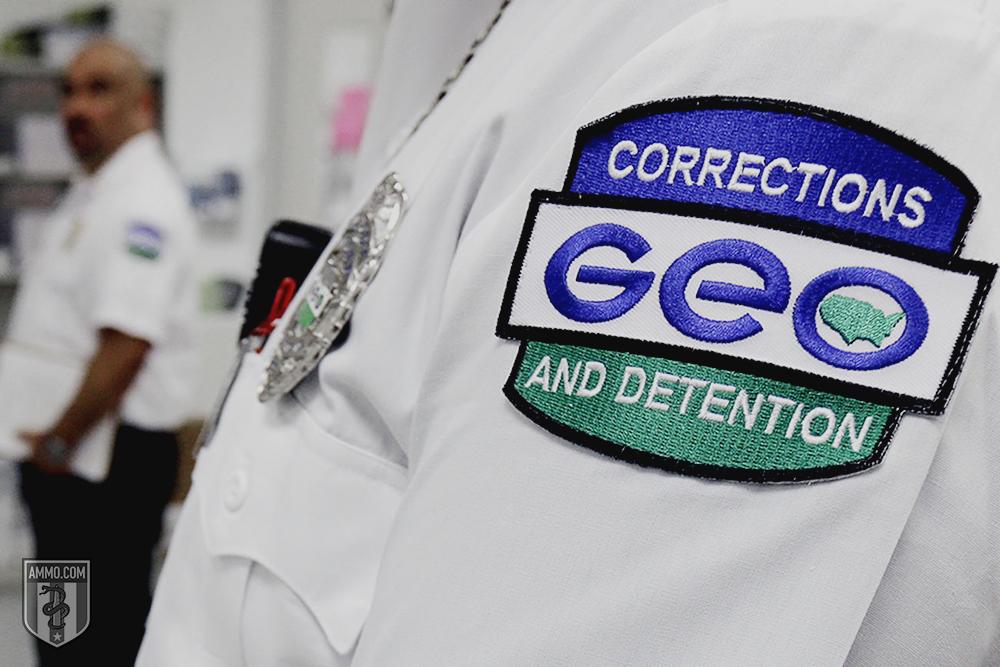
This spike in incarceration, however, is far more closely tied with the rise of private prisons. Between the years 1925 and 1980, the prison population in the United States remained constant as a proportion of the overall population. In 1983, however, two things happened: First, the first private prisons came into operation. Second, the prison population as a proportion of the overall population began to explode.
The first modern private incarceration company was Corrections Corporation of America (CCA), founded in 1983, and is currently known as CoreCivic. Their first contract was for a facility in Shelby County, Tennessee. This was the first time in American history when a government-run jail was contracted out to a private third party. The company made quick headlines when it offered to take over the entire prison system for the state for the sum of $200 million. The state, for its part, was quite ready to make a deal, but the backlash among the public, the prison guards union, and the state legislature ultimately squashed the deal.
This was hardly the end of the for-profit prison system. Fully 19 percent of all federal inmates are housed in privately owned and operated prisons. A comparatively lower 6.8 percent of all state inmates are housed in private prisons.
Since its founding, CoreCivic has seen a 200-percent increase in its profits. So it’s no surprise that the marketplace for private prison companies has become a bit crowded. Companies like the GEO Group, Inc. (formerly known as Wackenhut Securities), Management and Training Corporation (MTC), and Community Education Centers compete in a marketplace that took in $500 billion in 2011 alone according to Matt Taibbi’s book The Divide: American Injustice in the Age of the Wealth Gap.
The book further points out that major Wall Street money has flowed into this industry. Wells Fargo alone has $100 million invested in GEO Group and another $6 million in CCA. Fidelity Investments, The Vanguard Group, General Electric and Bank of America are likewise heavily invested in private prisons.
Some other numbers give a bit of shape to the scale of private prisons: CoreCivic has 80,000 beds in 65 different facilities. The GEO Group has 49,000 beds spread out over 57 correctional facilities. Most private facilities are in the West and the Southwest, where state and federal prisons freely mingle with one another.
Private Prisons Are Not Safe
Private prisons are, by virtually every metric, a worse place to hang your hat than government prisons. A United States Department of Justice report in 2016 found that private prisons were less secure, less safe, and more punitive than government-run prisons. The DOJ stated that it would cease the use of private prisons. However, soon thereafter, the Department of Homeland Security announced that it would renew its contract with CCA operation of the South Texas Family Residential Center, an immigration detention facility. Stock prices for private incarceration firms spiked upon the election of Donald Trump. President Trump’s Attorney General Jeff Sessions overturned the previous ban on private prisons.
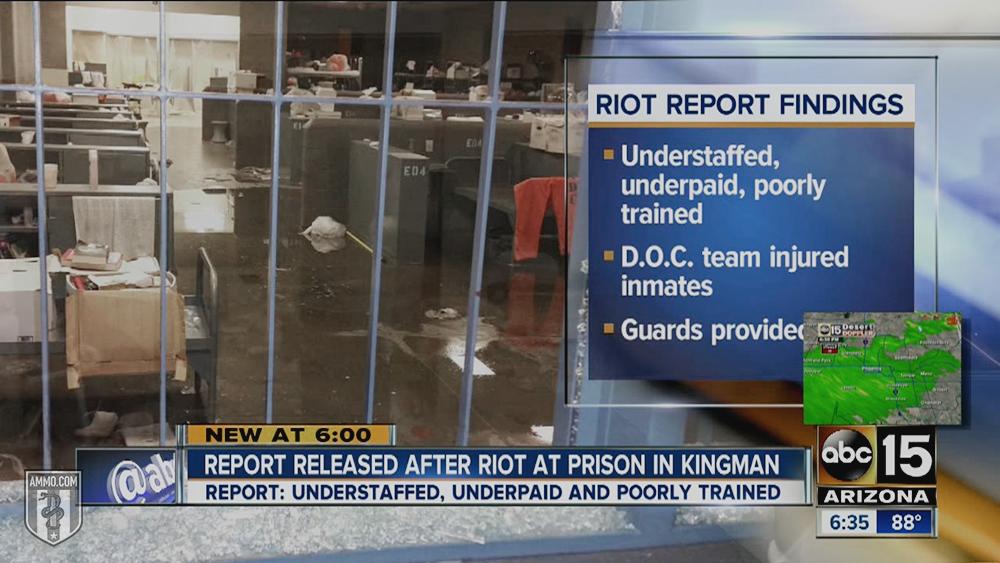
The lax culture of safety and security in private prisons is not just a problem for the inmates. It’s also a problem for the people in the communities where the prisons are located. For example, three murderers escaped from a minimum/medium-security prison – Kingman Arizona State Prison – in Mojave, Arizona. This resulted in a murder, robbery, and carjacking before the men were captured. The state Attorney General, Terry Goddard, laid the blame at the feet of the private prison system, which he said was not adequate for the task of incarcerating these kinds of hardened criminals.
The state did an extensive report on this prison after the jailbreak, which found a number of problems with the privately-run prison:
- The prison’s alarm system sent off so many false alarms that prison guards simply began ignoring them.
- Eight of the floodlights used in the prison yard were burnt out.
- Prison guards weren’t properly armed, nor were they properly trained with firearms.
- 75 percent of all inmates in the facility did not have the appropriate identification.
While it’s certainly true that government-run prisons are far from perfect, and often have budgetary issues, it’s hard to ignore the potential corner-cutting that may have led to this escape and the subsequent deaths.
Then, of course, there were the “kids for cash” scandal. The short version of the story is that two judges in Pennsylvania were receiving kickbacks for sending children to private prison facilities. Millions of dollars were processed to the two judges for giving out prison time for such offenses as mocking an assistant principal on MySpace and trespassing in an abandoned building. The two judges were sentenced to a combined 45.5 years in prison. Every juvenile offender who appeared before the judges had their convictions overturned, and a class-action lawsuit is currently pending.
Unsurprisingly, cost-benefit analysis of private prisons tends to have a “both sides” feel about them. Studies funded by the industry frequently tout the cost benefits of private operation. Studies funded by state-funded institutions, such as universities, tend to paint private prisons as bloated and inefficient.
Prison Guard Unions and Private Prisons Lobbying Elected Officials
Anywhere government money is being spent or the state is picking winners and losers, there you will find lobbying. Like the military-industrial complex, private prisons are no exception to this rule. The two largest private prison corporations have put more than $10 million into electing favorable candidates since 1989, and more than $25 million into lobbying.
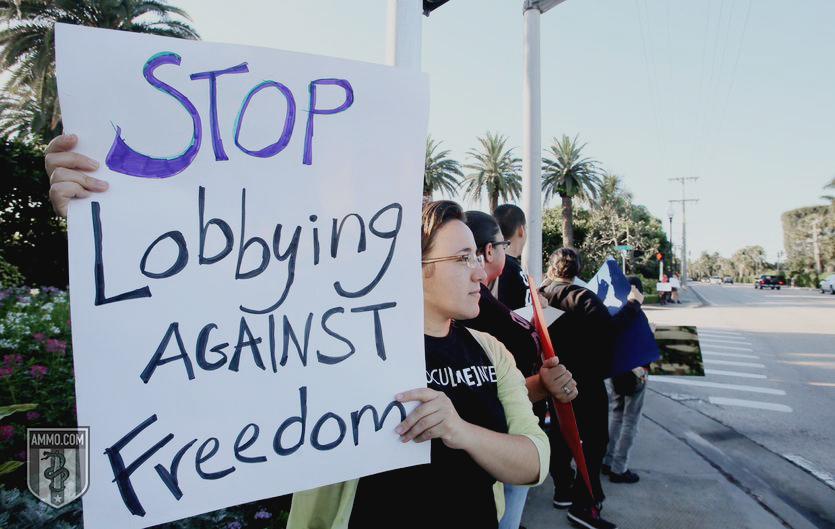
Marco Rubio is an excellent example of the power of the private prison lobby. He has very close ties to the GEO Group, the second-largest for-profit prison company in the United States. GEO was the recipient of a state contract for a $110 million prison during Rubio’s tenure as the Speaker of the House in Florida. This right after Rubio hired an economic consultant with close ties to the company, which has donated nearly $40,000 to his various political campaigns as of 2015. This makes him the politician with the closest financial relationship to the private prison industry.
The private incarceration industry has stepped up their lobbying game during the Trump Administration, with the GEO Group spending $1.3 million on lobbying between January and September 2017. That topped the total from the previous year, which was $1 million.
The timing of the increase in lobbying funds is worth considering. Immigration and Customs Enforcement (ICE) was looking to build five new detention centers at the time. Unsurprisingly, companies started lobbying hard to be the ones to build and operate these new facilities. That’s over 54,000 beds. What’s more, ICE is the number-one customer for the GEO Group, which is based in Florida.
Rubio is hardly the only politician to receive funding from private prison companies – which claim to never attempt to influence policy in any way other than trying to get contracts for private prison operation. Chuck Schumer has received over $100,000 in donations from both the GEO Group and CCA.
While private prison operations companies claim they do not attempt to influence public policy beyond trying to get those lucrative contracts, the same cannot be said for prison guard unions. The California prison guards union spent $100,000 in 1994 trying to get the three strikes law passed. This was the first of its kind, but quickly became the gold standard across the nation. 28 states have such laws as of 2018. The same union spent over $1 million to defeat Prop 5, which, if passed, would have reduced sentences for nonviolent crimes and created more drug addiction treatment resources in the state. Another $1 million was spent to defeat Prop 66, a measure designed to reduce the number of crimes carrying mandatory life sentences.
Modern Prison Labor
Because compulsory, unpaid prison labor is not prohibited by the United States Constitution, some have argued that prison labor is a continuation of chattel slavery.

However, prisoners are not owned by the state. What’s more, they are generally paid – albeit between $0.12 and $0.40 per hour. Prisoners, when taken as a whole, represent the third largest labor pool in the world. And while they engage in all kinds of labor, it tends to be manually intensive, low-skilled, deeply unpleasant and highly profitable for the corporations who are able to take advantage of it.
The days of prisoners making license plates and breaking rocks are long gone. Employers now receive a substantial tax credit ($2,400) for work-release labor. There’s even a euphemism for private companies who take advantage of prison labor – “Prison insourcing” – and it’s becoming increasingly popular with large firms. The list of organizations with significant prison labor includes popular brands like Whole Foods, Target, Starbucks, Victoria’s Secret, McDonald’s, IBM, Honda, Texas Instruments, Boeing, Nordstrom, Intel, Aramark, AT&T, BP, Microsoft, Nike, Macy’s, Wal-Mart and Sprint.
Prison labor is not without its benefits for the prisoners or for society at large. It can be a valuable outlet for prisoners, keeping them from getting into trouble and teaching them new skills. What’s more, many inmates have never had a legal job before. This means they have to learn the most basic aspects of holding down a job – like showing up on time, working with others as a team, and listening to instructions from a supervisor. Many studies show that prison employment leads to reduced recidivism rates.
While companies profit from prison labor, they’re also cleaning up in other ways. JPay, which began as a way to wire money to people on the inside, has seen rapid success with a monopoly on how prisoners’ friends and family can communicate with them inside some state prison systems. All told, JPay had contracts with 21 state correctional facility systems and a number of private facilities as of August 2018. With no paper mail allowed, JPay charges per electronic message – making the company millions, and making prisoners the ultimate captive audience.
The First Step Act: President Trump’s Prison Reform Bill
Few would have expected a Republican president to spearhead prison reform. Then again, President Trump isn’t just any Republican.
Overwhelmingly passed by the Senate – 87 to 12 – in December 2018, the First Step Act is the Trump Administration’s bipartisan victory to save money by reducing prison sentences. While some Republicans feared this vote would reflect as being soft on crime, Senate Judiciary Committee Chairman Sen. Charles E. Grassley stressed that Trump “wants to be tough on crime, but fair on crime.” Shortly after the vote, Trump tweeted that his “job is to fight for ALL citizens, even those who have made mistakes” and that this bill will “provide hope and a second chance, to those who earn it.”
The reform in this criminal justice bill is pretty significant. It reduces mandatory sentences, cutting a collective 53,000 years off existing sentences over the next 10 years. It creates a sentencing disparity between powder and crack cocaine, and reduces recidivism rates. And it decreases the “three strikes” penalty for drug felonies from life to 25 years.
But not everyone thinks this reform bill is a “first step” in the right direction. Since it doesn’t apply to local jails or state prisons, those skeptical of this new legislation have pointed out that it only affects about 10 percent of the country’s incarcerated population – hardly a dent. Many also disagree with the fact that this bill will release high-risk inmates and offenders.
Libertarian magazine Reason is in favor of more reform. A 2016 article asked the question “Should Felons Get Their Gun Rights Back?” The argument is roughly the same as that of restoring voting rights to felons: Once people have served their time and been released, society assumes that the ledger has been balanced. If someone cannot be trusted to own firearms once they have been released from prison (presumably because they are dangerous), why are they out on the street and not in a cell?
For those interested in Second Amendment freedom, all of this is important. In a sense, the gun grabbers are getting through our prison-industrial complex what they cannot get through either the legislature or the courts – a disarmed populace. Source
Second Thessalonians 2:9-12 speaks of a strong delusion God will send in the end times: “The coming of the lawless one is by the activity of Satan with all power and false signs and wonders, and with all wicked deception for those who are perishing, because they refused to love the truth and so be saved. Therefore God sends them a strong delusion, so that they may believe what is false, in order that all may be condemned who did not believe the truth but had pleasure in unrighteousness.”
First, it is clear this strong delusion will take place during the time of the lawless one (2 Thessalonians 2:8), also called the Antichrist or beast elsewhere in Scripture (Revelation 13). He is the one Jesus will kill with “the breath of his mouth” (2 Thessalonians 2:8; Revelation 19:15).
Second, God sending a delusion is only part of the account. Two other aspects are clear. Satan is involved (2 Thessalonians 2:9) and this delusion applies to those “who did not believe the truth” (v. 12). It is incorrect to simply say God tricks these people. Instead, those who are influenced by Satan and do not believe are among those who accept the delusion God will send into the world during this time. God desires for all to be saved (1 Timothy 2:4).
As soon as Samuel Bonner entered the Long Beach courtroom with his wrists chained to his waist, the judge made a simple, yet for Bonner, unprecedented, request: Could the bailiff please remove his shackles?

© Genaro Molina/Los Angeles Times LONG BEACH, CA – JULY 8, 2019 – Samuel Bonner sits emotionless after Judge Daniel J. Lowenthal vacated his 1982 murder conviction under the new felony murder law in Department S18 of the Long Beach Courthouse in Long Beach on July 8, 2019. There was a hold on Bonner’s case and was transferred to Men’s Central Jail to be released in the next day or two. (Genaro Molina/Los Angeles Times)
This is the moment, Bonner thought. This is it.
It was the closest thing to freedom he had felt in 37 years. The hour or so that followed was just as remarkable for the man who always insisted he was innocent of murder.
The hearing that day in July was spurred by the approval of California’s new felony murder law, which retroactively limits who can be charged with murder to those accused of actually killing or intending to kill. In L.A. County, Bonner and more than 1,600 others have sought relief, and about 10 convictions have been undone to date.
But the reprieve for Bonner that day went far beyond that. Superior Court Judge Daniel J. Lowenthal declined to resentence him and instead ordered him released, citing misconduct by a prosecutor who used a shady jailhouse informant. Besides the informant’s testimony, he said, there was little linking Bonner to the crime at all.
“That the death penalty was sought against someone based on testimony that was known to be false is horrifying and shocks the conscience,” the judge said.
The saga began on Veterans Day 1982 when Leonard Polk was found inside his Long Beach apartment in a pool of blood, severely beaten with two bullets through the back of his head.
Bonner and an acquaintance, Watson Allison, were charged with killing Polk during a robbery, making both eligibles for the death penalty if convicted.
At Bonner’s trial, the prosecutor at the time, Kurt Seifert, argued that Bonner was the gunman, despite a weak connection to the crime scene.
An undercover officer testified that he saw Bonner and Allison driving around, Bonner’s 1964 Ford rumbling and smoking, and thought they looked suspicious. The officer began to tail them, and when the car was idling at an intersection he observed a bicyclist leaning up against the car talking with Allison. The officer then saw Allison and the bicyclist, Polk, walk into a nearby apartment.
Later, a neighbor saw Allison making several trips in and out of the apartment carrying property including a TV set, and then driving off.
No one saw Bonner go inside Polk’s apartment. Authorities did find an envelope in his car addressed to Allison with Polk’s cross streets. A speaker found in Allison’s home — 11 days after the robbery — was marked by Bonner’s palm print. And a fuse found outside Polk’s apartment building matched fuses found in Bonner’s pocket.
The most conclusive link to Bonner came from the testimony of a key witness: A prolific jailhouse informant who claimed Bonner confessed to him that he shot Polk.
Before Bonner’s trial, the informant, Michael Hayes, appeared in court on his own murder charge. As part of a deal with prosecutors, he pleaded guilty to manslaughter and was sentenced to four years in state prison. The leniency was attributed to his cooperation in several serious cases, court documents show.
By then, one defendant in another murder case had already accused him of lying. During a preliminary hearing, Hayes testified that he saw the defendant shoot a man, then take his jewelry.
“You are lying,” the defendant blurted out, according to a transcript of the 1983 proceeding.
The judge tried to stop the defendant.
“He sits there and lies on me, just straight out lie on me like that. Why doesn’t he tell the truth?” the defendant said.
Hayes took the stand a few months later in Bonner’s trial, which involved just three days of testimony. Bonner’s lawyer, Ron Slick, who was known in legal circles as Dr. Death because so many of his clients ended up on death row, did not call a single witness in his defense.
Bonner was convicted of murder and robbery, but the jury concluded that he was not the shooter, so Seifert dropped the death penalty.
At Allison’s trail soon after, Seifert presented a separate panel of jurors with a different theory, in which Allison was the gunman and Bonner had a “relatively minor” role as the wheelman who never even entered the apartment. The prosecutor never brought up Bonner’s alleged confession.
Allison was convicted and sentenced to death.
In a deposition decades later in Allison’s habeas case, Seifert called his strategy — arguing at Allison’s trial that Bonner never set foot in Polk’s apartment — a “boo-boo” and “the big oops,” court documents show. A detective deposed around the same time said based on the evidence, he and his partner didn’t think Bonner killed Polk. He couldn’t remember if he formed that conclusion before or after Bonner’s trial, or if he relayed it to Seifert, court documents show.
Allison’s death sentence was eventually overturned and he was resentenced in 2012 to 25 years to life, according to the Department of Corrections and Rehabilitation. He will come up for parole again by January.
Nineteen days after his verdict in 1983, Bonner wrote a letter to the judge saying he didn’t get a fair trial. He had wanted to tell his side of the story, he wrote, but his attorney didn’t let him testify.
Slick, the attorney, could not be reached for comment.
Bonner continued his fight for decades, losing his appeal and habeas petitions — once because the paperwork was filed late. He said he was found unsuitable for parole several times because he wouldn’t accept responsibility for the crime.
“I expressed my empathy for the family,” Bonner told The Times recently. “I can’t say I take back something I didn’t do.”
The repeated rejection left him numb, he said, but he never stopped believing that one day he’d be free.
In 2002, another case was overturned because Hayes lied about a jailhouse confession. As it turned out, Hayes had been trading information with authorities in Kentucky for years, but they cut him off as an informant because of repeated dishonesty.
Even still, Bonner’s case was never reopened.
A spokeswoman for the district attorney’s office said it had no record of receiving a conviction review request from Bonner and was not notified of the two habeas petitions he filed in Los Angeles County Superior Court in recent years. Both petitions were denied by Lowenthal, the spokeswoman said.
It wasn’t until January, when the new felony murder law went into effect, that Bonner had a fresh chance to fight. The law says that murder charges can be filed only against people who actually killed or were a major participant with reckless indifference to human life. Bonner filed a petition seeking relief, triggering a hearing.
Prosecutors opposed on constitutional grounds, as they have done in many other cases, arguing in court papers that the new law improperly changes voter-approved crime-fighting initiatives, including a proposition that set stricter penalties for murder and another that expanded the definition of first-degree murder. They also argued that because it’s retroactive, the law improperly reopens judgments that were final.
Some judges across the state have agreed, others have not. Five people have been released, one was resentenced and four others are awaiting resentencing, the district attorney’s office said. Nearly 650 petitions have been denied.
A dozen or so of Bonner’s relatives showed up to his hearing last month in Long Beach, anxiously hoping for good news. His girlfriend said she noticed the judge looked over and smiled at them, which she thought was a positive sign. She took a deep breath.
“We’re really hoping,” Bonner’s sister said.
The judge started the hearing by saying he was going to do more than just address the constitutionality of the new law and instead ran through the legal history of Bonner’s case. Lowenthal said that other than Hayes’ testimony, there was “scant evidence” that Bonner was involved in the crime at all. And Hayes’ lies, he said, began as soon as he took the stand, starting with his name.
“His name is Charles Jones,” Lowenthal said. “Everything thereafter appears to have been a lie as well.”
Lowenthal then recounted the inconsistencies: Hayes testified that Bonner said he shot Polk with a .357 magnum, but Polk was shot with a .22-caliber gun.
Hayes testified that Bonner told him he stole money, but the evidence shows no money was taken. Hayes testified that Bonner told him he woke Polk up and shot him, but the evidence shows Allison and Polk had just entered the apartment. Hayes testified Bonner told him that he entered Polk’s home alone, but Allison’s fingerprints were found inside. Hayes testified that Bonner told him he’d shot Polk once, but Polk had been shot twice.
Seifert, the original prosecutor, would admit decades later in a deposition that when he heard Hayes describe the gun as a .357 magnum, he knew the informant was lying. Seifert, now retired, could not be reached for comment for this article.
Lowenthal also said Seifert’s presentation of inconsistent theories at the two trials, with no new evidence, violated due process.
“It’s axiomatic that a prosecutor’s function is not merely to seek convictions but also to honor truth,” Lowenthal said. “Here, that did not happen.”
The district attorney’s office said there was no record that Seifert, whose deposition came eight years after he retired, communicated his concern to a supervisor. His deposition, conducted in Allison’s federal case in which the district attorney’s office wasn’t a party, did not trigger a review of Bonner’s case.
The prosecutor who appeared in court last month urged Lowenthal to give her office more time to evaluate the merits of Bonner’s petition, setting off a fiery exchange.
“You are considering releasing a convicted murderer,” said Deputy Dist. Atty. Evelis De Garmo, who did not try the case and was standing in for a colleague.
“Convicted because of prosecutorial misconduct,” Lowenthal replied.
De Garmo said she was not in a position to respond.
“If that has happened, we will be the first to concede, as we have in the past,” she said. “Justice is important to us, your honor, as you’ve indicated.”
“Apparently not in this case,” Lowenthal quipped.
Ultimately, Lowenthal declined to resentence Bonner for the underlying robbery charge, citing “gross prosecutorial misconduct.”
Judges who have vacated felony murder convictions in other cases have resentenced defendants for whatever underlying offense led to the killing, whether it be a robbery, assault or other crime. In one recent case, a 25-years-to-life sentence for murder was reduced to four years for the remaining assault with a firearm charge.
Instead, Lowenthal dismissed both the murder and robbery charges, and urged the district attorney’s office to evaluate whether any other convictions were “procured in the same unscrupulous manner.”
De Garmo objected.
“Don’t interrupt me,” the judge said.
“That is very offensive,” she said.
“Don’t interrupt me or you are going to be removed from court,” he said.
A spokeswoman with the district attorney’s office said allegations of prosecutorial misconduct are taken “extremely seriously no matter how old the case,” and noted that the office is now reviewing Bonner’s case and other cases involving the jailhouse informant.
Lowenthal ordered Bonner released from custody. Bonner, who turned 57 this month, showed little emotion at the time. Behind him, his relatives cheered and applauded. Some wept; they all smiled. His sister and his girlfriend hugged each other tightly.
“Thank you, Jesus,” someone said.
Outside the courtroom, a niece FaceTimed one of Bonner’s sons.
“Your daddy’s coming home,” she told him.
Bonner was released from L.A. County Jail, where he had been held while awaiting his court appearances, on July 11, jail records show. He spent that day with his sisters in Long Beach, meeting nieces and nephews he never got to know. He visited his kids, including a daughter who was born just a month before he was locked up. She grew up speaking with him regularly over the phone and in letters, visiting when she could. So having him home was easy.
“We never lost touch,” said Tomeka Bonner, who turns 37 in October. “He’s a really good supporter mentally … and spiritually; he just wasn’t around physically.”
Bonner is now continuing the schooling he started in prison. He’s enrolled in culinary courses and hopes to one day open a restaurant. He’s also interested in a trucking career, because “it’ll allow him to travel and be outdoors and see a lot of the things he wasn’t able to see,” Tomeka Bonner said.
“Whatever he wants to do I’m behind him 100%,” she said.
Bonner and his mom chat at least twice a day: Once to say good morning, again to say goodnight. Sometimes they just sit on the phone, not even exchanging words, because they can.
“I don’t have to wake up to the control of somebody else,” Bonner said. “I have more control of my life now, which is a good thing.” Source
Our system is corrupt to the core. If a special interest offered bags of cash in return for a politician’s vote, it would be a criminal felony. Our system is designed to legalize what is essentially this transaction. The least we can do is not further globalize the corruption.
One sign of American corruption is the rapidity with which American society has become more unequal since the 1980s Reagan destruction of the progressive income tax. The wealthier the top 1 percent is, the more politicians it can buy to gather up even more of the country’s wealth. In my lifetime the top one percent has gone from holding 25% of the privately held wealth under Eisenhower to 38% today.
In order for sin to work, there has to be a “suppression of the truth.” The reason people sin is not because they don’t know better. People sin because they have chosen to ignore, to suppress what creation is clearly revealing about God. We live in the universe that God has created, and throughout the universe, from the delicate flower to the boiling hot sun, God has communicated to us his invisible qualities. There is not a blade of grass, there is no color in this world that is not intended to make us rejoice in our knowledge of God.
They perverted justice among themselves (v. 7): “You turn judgment to wormwood, that is, you make your administrations of justice bitter and nauseous, and highly displeasing both to God and man.’’ That fruit has become a weed, a weed in the garden; as nothing is more venerable, nothing more valuable, than justice duly administered, so nothing is more hurtful, nothing more abominable, than designedly doing wrong under color and pretense of doing right. Corruptio optimi est pessima —The best, when corrupted, becomes the worst.
These cases also make good fodder for Federal “discovery letters” and state motions for discovery.
BRADY VIOLATIONS
U.S. SUPREME COURT
Brady v. Maryland (U.S. 1963) held that a prosecutor under the Fifth and Fourteenth amendments has a duty to disclose favorable evidence to defendants upon request if the evidence is “material” to either guilt or punishment.
Giles v. Maryland (U.S. 1967): After having been convicted of rape in a Maryland state court, defendants brought a post-conviction proceeding, alleging that the prosecution denied them due process of law by suppressing evidence favorable to them and by the knowing use of perjured testimony against them. The presiding judge in the post-conviction proceeding ordered a new trial on the ground that the petitioners’ evidence did not sustain the allegation of knowing the use of perjured testimony by the prosecution, but did establish the suppression of evidence concerning the credibility of witnesses and the issue of consent, which constituted a denial of due process. This judgment was reversed by the Court of Appeals of Maryland on the ground that the evidence allegedly suppressed would not materially affect the determination of the petitioners’ guilt or the punishment to be imposed, and that the prosecution’s failure to disclose it was not so prejudicial as to warrant the granting of a new trial on the basis of the denial of due process. Supreme Court vacated the judgment of the Maryland Court of Appeals and remanded the case for further proceedings.
Giglio v. United States (U.S. 1972): Withheld promise of immunity to con-conspirator upon whose testimony the Government’s case depended required reversal of a conviction because “evidence of any understanding or agreement as to a future prosecution would be relevant to [co-conspirator’s] credibility and the jury was entitled to know of it.”
United States v. Agurs (U.S. 1976): Prosecutor has a due process duty to disclose evidence about a victim’s criminal record, except (1) when the victim’s record was not requested by defense counsel and no inference of perjury by witnesses created; (2) if the trial court remains convinced of defendant’s guilt after the withheld evidence is reviewed in light of entire trial record; and (3) the trial judge’s firsthand appraisal of the record is thorough and reasonable.
United States v. Bagley (U.S. 1985): Refined Brady by holding that a prosecutor’s duty to disclose material favorable evidence exists regardless of whether the defendant makes a specific request. The Court said “favorable evidence” is “material” if there is a reasonable probability that disclosure of the evidence would have produced a different outcome. A “reasonable probability” is “a probability sufficient to undermine confidence in the outcome.”
Kyles v. Whitley (U.S. 1995): Accused entitled to a new trial because of the prosecution’s failure to comply with the due process obligation to disclose material evidence favorable to the accused concerning his possible innocence of the crime because the net effect of the withheld raised a reasonable probability that the evidence’s disclosure to competent counsel would have produced a different result.
Even if the prosecutor was not personally aware of the evidence, the State is not relieved of its duty to disclose because “the State” includes, in addition to the prosecutor, other lawyers and employees in his office and members of law enforcement.
Strickler v. Greene (U.S. 1999): Held that a Brady violation occurs when: (1) evidence is favorable to exculpation or impeachment; (2) the evidence is either willfully or inadvertently withheld by the prosecution; and (3) the withholding of the evidence is prejudicial to the defendant.
Cone v. Bell (U.S. 2009): Observed, without specifically holding, that a prosecutor’s pre-trial obligations to disclose favorable or impeaching evidence, either to guilt or punishment, “may arise more broadly under a prosecutor’s ethical or statutory obligations” than required by the Brady/Bagley post-conviction “materiality” standard of review. The court distinguished the post-conviction setting where the reviewing court must make a constitutional determination of whether the withheld evidence is material to the prosecutor’s pre-trial broader ethical obligations to disclose, which requires a “prudent prosecutor [to] err on the side of transparency, resolving doubtful questions in favor of disclosure.”
District Attorney’s Office for the Third Judicial District v. Osborne (U.S. 2009): Prosecution’s duty to disclose applies only to evidence suppressed at trial, not evidence suppressed post-conviction.
Smith v. Cain (U.S. 2012): Impeachment evidence must be disclosed when other evidence is not strong enough to support a conviction.
Wearry v. Cain (U.S. 2016): The prosecution’s failure to disclose material evidence violated the death row inmate’s due process rights because the newly revealed evidence sufficed to undermine confidence in the inmate’s conviction because the only evidence directly tying the inmate to capital murder was a first witness’s dubious testimony, corroborated by the similarly suspect testimony of a second witness, and the first witness’s credibility, already impugned by his many inconsistent stories, would have been further diminished had the jury learned about the newly revealed evidence.
FIRST CIRCUIT COURT OF APPEALS
Mastracchio v. Vose: Brady violation because knowledge of witness payments or favors made by the Witness Protection team is discoverable.
United States v. Colon (1st Cir. 2008): Police reports are favorable evidence when they contradict government witnesses.
Drumgold v. Callahann (1st Cir. 2013): Information about government providing “free housing” for prosecution witness is material because it “transformed his quality of life” and could be used for impeachment purposes.
SECOND CIRCUIT COURT OF APPEALS
United States v. Matthews (2nd Cir. 1994): Rule 16 violation because the government attorney withheld a letter written by the defendant instead of disclosing it within a timely manner.
Leka v. Portuondo (2nd Cir. 2001): Brady violation because off-duty policeman’s undisclosed observations would have contradicted the testimony of other witnesses.
Disimone v. Phillips (2nd Cir. 2006): Brady violation because an exculpatory statement would have allowed the defense to investigate another party’s involvement.
United States v. Mchaffy (2nd Cir. 2013): Government agency reports, although inadmissible, are material and subject to disclose because they may lead to admissible evidence.
THIRD CIRCUIT COURT OF APPEALS
United States v. Pelullo (3d Cir. 1997): Brady violation because an FBI agent’s undisclosed notes and FBI surveillance tapes could have been used to impeach government witnesses whose credibility was central to the case.
Virgin Islands v. Fahie (3d Cir. 2005): Prosecutorial “bad faith” is “probative to materiality” as well as relevant to determining a remedy.
Wilson v. Beard (3d Cir. 2009): Witness’s mental health, past convictions, and prior payment as informant material and subject to disclosure because evidence could be used to impeach government’s three primary witnesses.
Dennis v. Sec’y, Pa. Dep’t of Corr. (3d Cir. 20150: Defendant entitled to habeas corpus relief under Brady because of suppressed witness’s receipt that corroborated defendant’s alibi, a police activity sheet memorializing that a witness had given a previous statement inconsistent with her trial testimony, and documents regarding a tip from an inmate.
FOURTH CIRCUIT COURT OF APPEALS
Spicer v. Roxbury (4th Cir. 1999): Brady violation because prosecutors did not disclose a witness’s prior inconsistent statement that he did not see the defendant.
Monroe v. Angelone (4th 2003): That while some Brady material which comes to light post-trial may not constitute a violation because of redundancy, this does not “excuse [pre-trial] discovery obligations.”
Breakiron v. Horn (4th Cir. 2011): Government failure to disclose impeachment evidence about murder vehicle is a Brady violation.
FIFTH CIRCUIT COURT OF APPEALS
Guerra v. Johnson (5th Cir. 1996): Brady violation for failure to disclose police intimidation of key witnesses and information regarding suspect was seen carrying murder weapon minutes after shooting.
United States v. Sipe (5th Cir. 2004): Brady violation because the cumulative effect of the undisclosed statement, the criminal history of witness, and benefit to testifying aliens undermined the credibility of a key witness.
United States v. Miller (5th Cir. 2008): Brady violation because undisclosed referral letter could have been used to impeach a witness at trial.
Banks v. Thaler (5th Cir. 2009): Transcripts of police interviews with government witnesses subject to disclosure because of impeachment value.
LaCaze v. Warden La. Corr. Inst. For Women (5th Cir. 2011): Brady violation because the prosecution withheld material concerning promise made to a co-defendant.
SIXTH CIRCUIT COURT OF APPEALS
Schledwitz v. United States (6th Cir. 1999): Brady violation because Government witness portrayed as a neutral and disinterested expert had actually been investigating the defendant for years.
Joseph v. Coyle (6th Cir. 2006): Brady violation because witnesses’ undisclosed testimony transcripts, notes on witness interviews, and immunity agreement would have impeached prosecution’s crucial witness.
O’Hara v. Brigano (6th Cir. 2007): Brady violation because the undisclosed written statement by the victim could have been used to impeach the victim’s testimony.
Robinson v. Mills (6th Cir. 2010): Failure to disclose paid confidential informants who had information about the only witness who contradicted the defendant’s self-defense defense.
SEVENTH CIRCUIT COURT OF APPEALS
United States v. Boyd (7th Cir. 1995): Brady violation for failure to disclose drug use and dealing by Government witness and “continuous stream of unlawful favors” including phone privileges, presents, and special visits.
Crivens v. Roth (7th Cir. 1999): Brady violation because failure to disclose crimes committed by Government witness is Brady even when witness used aliases.
EIGHTH CIRCUIT COURT OF APPEALS
White v. Helling (8th Cir. 1999) found a Brady violation in a 27-year-old murder case because the Government did not disclose that its chief eyewitness had originally identified someone else and identified the defendant only after several meetings with the police.
United States v. Barraza-Cazares (8th Cir. 2006): Held that a co-defendant’s statement is exculpatory evidence because it is relevant to the co-defendant’s role in the offense.
NINTH CIRCUIT COURT OF APPEALS
United States v. Strifler (9th Cir. 1988): Brady violation when, after a request by the defendant, the Government does not disclose information in probation file relevant to witness’s credibility on the ground that it was privileged.
Singh v, Prunty (9th Cir. 1998): Brady violation because of “favorable deal” given to a star witness and not disclosed.
United States v. Santiago f (9th Cir. 1995): Brady violation because the prosecutor had knowledge of and access to inmate files, including the defendant’s files held by the Bureau of Prisons.
Phillips v. Ornoski (9th Cir. 2012): Failure to disclose plea offer, although not accepted, to co-conspirator is a Brady violation.
Gonzales v. Wong (9th Cir. 2012): Prison psychological reports on prison informant provided new information upon which to impeach witnesses.
TENTH CIRCUIT OF APPEALS
Banks v. Reynolds (10th Cir. 1995): Brady violation because prosecutors did not disclose another individual or individuals had been arrested for the same charge.
Gonzales v. McKune (10th Cir. 2001): Forensic evidence relative to low sperm count in semen recovered from victim exculpatory because the defendant did not have low sperm count.
Douglas v. Workman (10th Cir. 2009): Failure to disclose deal struck between the prosecution and sole witness linking the defendant to murder constitutes Brady violation.
ELEVENTH CIRCUIT COURT OF APPEALS
Jacobs v. Singletary (11th Cir. 1992): Witness statements to a polygraph examiner which were contrary to witness’ trial testimony is exculpatory because the conflicting statements were relevant to the defendant’s claim of innocence.
United States v. Ignasiak (11th Cir. 2012): Failure to disclose payment to the government’s expert witness and his excused criminal activity constituted impeachment evidence.
D.C. CIRCUIT OF APPEALS
United States v. Brooks (D.C. Cir. 1992): Brady violation if a specific request is made by the defendant and the Government does not search records of police officers/witnesses.
United States v. Cuffie (D.C. Cir. 1996): Brady violation because undisclosed evidence of witness’s prior perjury could have impeached witness, even though the witness had been impeached by cocaine addiction, cooperation with the prosecution, incentives to lie, and violation of oath as a police officer.
United States v. Wilson (D.C. Cir. 2010): Failure to disclose internal investigation of police officer/witness impeachable evidence because it demonstrated an incentive to cooperate with the government.
TEXAS COURT OF CRIMINAL APPEALS
Ex parte Mowbray (Tex. Crim. App. 1996): Brady violation because prosecutors failed to disclose exculpatory expert reports.
Ex parte Richardson (Tex. Crim. App. 2002): Prosecutor must disclose diary of officer on security detail for a State witness because diary revealed witness’s untrustworthiness, even though prosecutor testified he had never seen the diary.
Webb v. State (Tex. Crim. App. 2007): Prosecutor’s duty to disclose is a continuous one, at least through trial.
Leza v. State (Tex. Crim. App. 2011): Defendant attached two letters on direct appeal that his appellate counsel received from an assistant district attorney, apparently in relation to another case altogether. These letters informed appellate counsel that, since the defendant’s trial, a certain Bexar County deputy sheriff, not a witness at either phase of the defendant’s own trial, had been charged with aggravated perjury and abuse of official capacity. When the relevance of these changes to the defendant’s circumstances was not immediately apparent to appellate counsel, she contacted the assistant district attorney for additional information, but none was provided. Appellate counsel now avers that she believes the letter was most likely sent to her by mistake, but in an abundance of caution, she brings a claim that the State has violated the appellant’s due-process rights under Brady by suppressing evidence favorable to him at the time of his trial. Obviously, the letters upon which the defendant now relies are not any part of the appellate record in this case, and we could not predicate any appellate relief upon them even if they did establish a Brady violation. We, therefore, overrule the defendant’s [Brady claim]—without prejudice, of course, to pursue any Brady claim that further investigation might turn up pursuant to his initial application for a post-conviction writ of habeas corpus brought under Article 11.071 of the Code of Criminal Procedure.
Pena v. State (Tex. Crim. App. 2011): Brady violation because the prosecution failed to disclose to the defendant the audio portion of a videotape containing statements he made to the police.
PROSECUTORIAL MISCONDUCT
U.S. SUPREME COURT
Mooney v. Holohan (U.S. 1935): Misconduct through “knowing use” of perjured testimony to convict a criminal defendant in violation of “due process” of law. Acts and omissions by a prosecutor can violate “the fundamental conceptions of justice which lie at the base of our civil and political institutions.”
Berger v. United States (U.S. 1935): Prosecutor engaged in “misconduct” through his trial tactics by “misstating the facts in his cross-examination of witnesses; of putting into the mouths of such witnesses things which they had not said; of suggesting by his questions that statements had been made to him personally out of court in respect of which no proof was offered; of pretending to understand that a witness had said something which he had not said, and persistently cross-examining the witness upon that basis; of assuming prejudicial facts not in evidence; of bullying and arguing with witnesses; and, in general, of conducting himself in a thoroughly indecorous manner.”
Alcorta v. Texas (U.S. 1957): Due process violated by prosecution’s “passive” use of perjured testimony.
Napue v. Illinois (U.S. 1959): Held that “the failure of the prosecutor to correct the testimony of the witness which he knew to be false denied petitioner due process of law in violation of the Fourteenth Amendment.”
Massiah v. United States (U.S. 1964): A prosecutor may not elicit information from a defendant outside the defense counsel’s presence.
Banks v. Dretke (U.S. 2004): Misconduct in a capital murder case because the prosecution withheld information that would have discredited two prosecution witnesses, including one who was a paid police informant and the other, had coached by the prosecution before testifying.
TEXAS COURT OF CRIMINAL APPEALS
Stein v. State (Tex. Crim. App. 1973): Misconduct warranting reversal of conviction when prosecution repeatedly violated trial court order not to make personal remarks about the defendant or present arguments outside the evidence.
Boyde v. State (Tex. Crim. App. 1974): Misconduct when prosecution deliberately elicits testimony from witnesses about the defendant’s guilt.
Dexter v. State (Tex. Crim. App. 1976): Misconduct when prosecution attempted to link the defendant to “organized crime” by placing physical material not introduced into evidence marked “organized crime” before a jury.
Ex Parte Adams (Tex. Crim. App. 1989): Misconduct warranting reversal of a conviction because prosecution suppressed favorable evidence, knowingly used perjured testimony, and deceiving trial court during the defendant’s capital murder trial.
Duggan v. State (Tex. Crim. App. (1989): Misconduct and reversal of conviction required when the prosecution fails to correct perjured testimony.
Ex parte Castellano (Tex. Crim. App. 1993): Misconduct and reversal of conviction required when perjured testimony by a police officer, although privately motivated, is utilized because such testimony is “imputable” to prosecution.
Cook v. State (Tex. Crim. App. 1996): Conviction reversed for prosecutorial misconduct based on withholding potentially favorable evidence and using misleading and false testimony by an expert witness.
Ex Parte Davis (Tex. Crim. App. 1997): Conviction reversed for prosecutorial misconduct
TEXAS COURTS OF APPEALS
Rogers v. State (Tex. App.—Houston [1st Dist.] 1987): Misconduct warranting reversal because prosecutor’s cross-examination of both defendant and defendant’s character witnesses was characterized by misconduct, including the assumption of inflammatory facts not in evidence, prejudicial remarks that expressed the prosecutor’s personal opinions, and improper bolstering. Even though the defendant failed to preserve many of the errors by timely objection, the errors were so pervasive that the appellant was denied a fundamentally fair and impartial trial. The prosecutor’s questions and side-bar comments only served the purpose of inflaming and prejudicing the jurors, and the record supported a finding that the prosecutor was not acting in good faith. The prejudicial effect of the prosecutor’s remarks would not have been removed by instructions to disregard. The prosecutor’s misconduct was so serious and pervasive that it undermined
appellant’s right to due process of law.
Young v. State (Tex. App.—Dallas 1988): Misconduct because the prosecutor in jury argument tied defendant for a fictitious attempted offense against police officers, and, thus, prosecutor engaged in calculated misconduct to deprive the defendant of a fair and impartial trial.
Ramirez v. State (Tex. App.—Austin 2002): Misconduct and reversal of conviction required because of due process violated by the prosecution’s knowing use of perjured testimony.
Hajjar v. State (Tex. App. – Houston [1st Dist. 2004): Prosecutorial misconduct is an independent basis for objection that must be specifically urged to preserve error.
Jimenez v. State (Tex. App. – San Antonio 2009): Serious and continuing prosecutorial misconduct undermines the reliability of the fact-finding process demanding a new trial. Source
Prosecutorial Misconduct
U.S. judges see ‘epidemic’ of prosecutorial misconduct in state
SAN ANTONIO, TEXAS
Cliven Bundy wanted to walk out of the courtroom in his jail jumpsuit and ankle shackles. Deputy marshals blocked him from doing that. But if it hadn’t been for “flagrant misconduct” committed by federal prosecutors and investigators in the case, the Nevada cattleman may not have been walking out at all.
US District Judge Gloria Navarro dismissed the case, which related to an April 2014 standoff with federal officers seeking to impound Mr. Bundy’s cattle, “with prejudice” this week – meaning prosecutors cannot retry the case on the same charges. “The court has found that a universal sense of justice has been violated” by prosecutors who withheld and misrepresented vast quantities of evidence, she told the courtroom.
The case is a dramatic example of prosecutorial misconduct, which some legal experts see as a cultural flaw in the criminal justice system. Prosecutors are arguably the most powerful actors in the system, in part because they are the gatekeepers for most evidence in a case. Having to provide evidence to a defendant while also seeking to beat them in court understandably can lead to temptation, legal experts say.
“It’s like making your own calls in a basketball game: ‘That wasn’t a foul on me,’ ” says John Raphling, a senior researcher at Human Rights Watch who spent more than two decades as a criminal defense lawyer in California.
“I don’t want to say it’s human nature, but it’s a natural tendency to see things your own way,” he adds, “especially when you’re wrapped up in the competitive world of trying cases.”With Trump’s new immigration rule, a deep bow toward ‘America First’
Prosecutors are also rarely formally punished for misconduct. As technological advances continue to expand the government’s investigative resources, some experts fear prosecutorial misconduct could become more prevalent and harder to catch. But the question of how often it occurs now is open to debate – with a former US attorney calling incidences like the Bundy mistrial a “rare event” and a former federal judge calling it an “epidemic.”
Flawed prosecutions
There are high-profile examples, such as Bundy and the flawed prosecutions of former US Sen. Ted Stevens (R) of Alaska and members of the Duke University lacrosse team. Beyond that, 42 percent of the 166 exonerations in 2016 as a result of official misconduct, according to the National Registry of Exonerations.
Since the United States Supreme Court decided Brady v. Maryland in 1963, prosecutors have been required to turn over any evidence that points in the direction of innocence to the defendant. Evidence gathered in an unconstitutional fashion, such as an illegal search or self-incriminating statements elicited prior to Miranda rights being read, are also not permissible in court. Prosecutors can also commit misconduct during a trial by making misrepresentations to the jury or referring to evidence that has been ruled out-of-bounds.
In a 2013 dissent, former US 9th Circuit Judge Alex Kozinski, who retired last month amid sexual harassment allegations, declared “an epidemic of Brady violations.” But others say it is difficult to know how often prosecutorial misconduct occurs.
If a prosecutor is unsure whether a piece of evidence is permissible or important to the defense, they can give it to a judge to make a ruling. Through their close work with law enforcement, they often hold most of the evidence in a case. Whether they choose to disclose it – either straight to the defendant or to a judge – is entirely up to them.
Reconciling their position as both the opponent of the defense and perhaps their most important source of information can be difficult, particularly over the course of a long case, says Paul Charlton, who spent 10 years as a US attorney in Arizona.
“You become familiar with the facts and embrace a certain narrative,” he adds. When “you are weighing whether you should turn over that evidence, the risk is you’re making that decision in some way to protect the case as opposed to providing the defendant with the opportunity to put on the best defense.”
Defense attorneys can appeal to the judge for the prosecutor to release certain information, and the longer a case goes on the more evidence they are likely to gain access to. With more than 90 percent of court cases in the US settling before trial, however, cases tainted by misconduct could be settled before misconduct is unearthed.
‘Parallel construction’
Contributing to concerns is the increasing sophistication of investigative techniques and technologies, experts say. This allows law enforcement and prosecutors to gather more evidence – but also obscure how that evidence was collected.
One practice is for investigators to conceal their methods for identifying a suspect or finding evidence, then going through the motions of discovering it in a different way.
Reuters first reported the practice, which some call “parallel construction,” in detail in a 2013 investigation into a secretive US Drug Enforcement Administration unit that funneled information from its own surveillance activities to law enforcement agencies around the country. Those agencies then concealed how they came by the information.
Similar to prosecutorial misconduct generally, it is difficult to know exactly how often parallel construction occurs – although a new Human Rights Watch report says that needs to be investigated further. The most concrete examples in the report come from the Reuters report and from instances where law enforcement agents admitted to using a pretextual traffic stop to uncover information that had been passed to them from another source. The Supreme Court has declared pretextual traffic stops to be legal.
“We don’t have proof besides the pretextual traffic stops, but I think there is enough to ask questions,” says Sarah St. Vincent, the report’s author. She suggests that defense attorneys be more aggressive in asking for information and evidence from investigations to be disclosed and that judges be more skeptical of claims of where information and evidence came from.
The report suggests that parallel construction may be being employed to conceal information gathered through legally questionable methods. Whether it is obtained unlawfully or not is beside the point, according to Nancy Gertner, a Harvard Law School lecturer who served as a federal judge from 1994 to 2011, since the practice transfers the decision of what information gets disclosed to defendants from judges to law enforcement and prosecutors.
“You can envision a situation where they think they’re doing something legal but they’re not sure, so they use parallel construction,” she adds. “The problem is we don’t have a system that should rest on the judgment of the police officer.”
“Before the internet, before digital information and GPS devices, I could tell when someone broke into my house. Now it’s more difficult,” she adds. “Parallel construction then makes it even more difficult to determine how evidence was obtained, and therefore if it was legally obtained.”
‘An aberrant event’ or a hidden problem?
Mr. Charlton says he’d never heard the term “parallel construction” before reading the Human Rights Watch report. “I’m not convinced,” he adds, “that the issue they’ve identified is as significant as the [report] will have led you to believe.”
If law enforcement and prosecutors do use parallel construction to conceal unlawfully obtained information “it’s an aberrant event,” he continues, “and if it’s an aberrant event I would say it’s a solution looking for a problem.”
Critics say prosecutors should be more rigorous in vetting what evidence is available and where it came from.
“We find overwhelmingly it’s the cops, not the prosecutors [committing misconduct], but the culture is the prosecution is not probing either,” says Ron Kaye, a criminal defense attorney in Los Angeles, who specializes in wrongful imprisonment cases.
A key reason for that maybe that prosecutors rarely receive severe formal discipline for misconduct. Courts punished prosecutorial misconduct in less than 2 percent of cases where it occurred over a 50-year period, according to a 2013 report from the Center for Prosecutor Integrity.
“It’s important that we have protections for prosecutors [from spurious misconduct claims] to be able to do their jobs effectively, without fear of a chilling effect on their performance,” says Kami Chavis, director of the Criminal Justice Program at the Wake Forest University School of Law in Winston-Salem, N.C., and a former US attorney.
“But at the same time,” she adds, “that does create again this issue of how do we then even uncover prosecutorial misconduct, and what do we do to deter it?” Source
“The coming of the lawless one is by the activity of Satan with all power and false signs and wonders.” In Revelation 13:3-4 there is another prediction that this will occur. The Antichrist will appear to die or come close to death, yet be healed: “One of its heads seemed to have a mortal wound, but its mortal wound was healed, and the whole earth marveled as they followed the beast. And they worshiped the dragon, for he had given his authority to the beast, and they worshiped the beast, saying, ‘Who is like the beast, and who can fight against it?’” Many will be tricked into worshiping the Antichrist as a result.

This strong delusion God will send is something that will serve as part of God’s overall judgment of the earth during the seven-year tribulation period following the rapture of believers to heaven (1 Corinthians 15:51-58; 1 Thessalonians 4:13-18). Those who remain on the earth will live under the tyranny of the Antichrist, experience many judgments, and many will believe in the Antichrist and worship him. Yet even today many reject Christ and believe the lies of Satan. God calls us to confess Jesus as Lord and believe in Him as the resurrected Son of God (Romans 10:9). Only then do we experience the changed life Jesus gives and escape the lies of Satan.
StevieRay Hansen
Editor, HNewsWire.com
The light went out in the church, and that’s the reason the world got dark. Dark times were perpetrated by the “last one out, turn out the lights” “The church lights have gone OUT”.
“Unless God has raised you up for this very thing, you will be worn out by the opposition of man and devils”…
Let Me Make This Abundantly Clear. (I Am Apolitical) While I Have a General Distaste for Politicians No Matter the Party They Belong To, I Am Unashamedly Politically a Bible Believing Conservative Christian. I Have a Severe Distrust of Government. I Believe It Is the Most Inefficient and Ineffective Way to Accomplish Most Things. While I Strongly Disagree with Liberals/Progressives and Conservative on Most Political Issues, and While I Believe Liberals/Progressives and Most Politicians Are Terribly Misguided and Naive About What Big Government Will Eventually Result In, I Strive to Not Question Their Motives. at the Same Time, While I Find Myself in Agreement with Conservative Politicians on Some Issues, I Do Not Believe Electing Republicans Is the Answer to Everything. for Me, Very Sadly, the Main Difference Between Republicans and Democrats Is How Quickly They Want to Drive the Car Towards the Cliff. Simply Put, I Do Not Believe the Government Is the Solution for Everything. I Do Not Place Any Faith, Trust, or Hope in Any Politicians to Fix What Is Wrong with the World. “Come Lord Jesus!” (Revelation 22:20)
Our government has been overthrown. As evidenced by Trump’s capitulation on the border, his recent servitude to the GMO industry and his acquiescence to the warmongers, our President has been compromised. Our liberties are being eliminated one by one. Gun confiscation is next. The Constitution is gasping its last breaths. Our borders are destroyed and our culture has been turned upside down by every perversion known to man.
Education is useless without the bible (Daniel Webster)
Usually, the Lord doth no great thing for or against his people, without giving warning of it before it comes.
John Wesley who said that what we tolerate in our generation, will be embraced by the next. Wesley is 100% correct! We are living in sick times.
The Left, a broad term for Liberal Socialist Democrats that can only be explained fully by using the Bible explanation of the human race is as follows. A servant of Satan, because you are either saved or lost. This election has brought out the true nature of who you serve. Simply put, it’s Donald Trump, Conservatives, and Christians against the rest of the world. The Left’s Love applies only to those who believe as they do. They Love evil and commit Anarchy against those who love good. They are governed by lies and never tell the truth. On this Friday, Inaugural Day for the swearing-in of Donald Trump as the 45th President of the United States the Left wants to commit widespread Anarchy to shut down the swearing-in ceremony. Their goal of transforming America, which was founded in Judea Christian values into a Pagan Nation is almost complete. Their goal has always been the total removal of God from American society and the downfall of America. Donald Trump says he is a Presbyterian, but he left off the USA, an apostate church.
- Corinthians 4:8-11 New King James Version (NKJV)
- We are hard-pressed on every side, yet not crushed; we are perplexed, but not in despair; 9. persecuted, but not forsaken; struck down, but not destroyed— 10. always carrying about in the body the dying of the Lord Jesus, that the life of Jesus also may be manifested in our body. 11. For we who live are always delivered to death for Jesus’ sake, that the life of Jesus also may be manifested in our mortal flesh.
Satan has power over (LGBTQE-TRANS PEOPLE). The “sons of disobedience” referred to in Ephesians 2:2 are those who have not trusted Christ as Lord and Savior (cf. Acts 26:18; 2 Corinthians 4:4; Revelation 13:12). The demons are also under the rule of Satan (Matthew 12:24), and one of his titles is “prince of demons” (Matthew 9:34). Satan has a kingdom (Matthew 12:26) and a throne (Revelation 2:13). Satan is called a prince because he is a ruler and possesses the power to manifest evil in the world through influencing people and commanding demons.
HNewsWire- “All political language is designed to make lies sound truthful and murder respectable.” Just look at some of our modern-day examples: torture is “enhanced interrogation techniques”; murder is “collateral damage”; the aggression initiation of war is a “pre-emptive strike”; the theft of taxpayers’ money is a “bailout”, and the theft of depositors’ money in a bank is a “haircut” or “bail-in”.In a blatant example of Newspeak, the New World Order controllers (through the psychiatric DSM V) have tried to rename pedophiles as “minor-attracted persons” and redefine pedophilia as “sexual orientation”. This makes no sense since sexual orientation has to do with gender, not age, with whether you are attracted to males or females, not how old they are. There are even organizations (like B4UAct.org) which are claiming that pedophiles are being unfairly stigmatized for their feelings!
If homosexuality has been posed as healthy, good and normal, in the face of overwhelming evidence to the contrary, so can pedophilia. Pro-pedophilic articles are making their way into academia.
The Cult of LGBTQE-E for EVIL and is often a cover for child-molesting perverts
Tagged Under: abuse, children’s health, gender-confused, gender issues, gender madness, the left cult, LGBTQE-E For Evil un-godly Mob, Lunacy, mutilation, transgender, Child molesting perverts LGBTQE- E For Evil, drag queens, perverts
Unfortunately, not all alternative sources are reliable, even some Major Christian (and I use Christian loosely) news sources have been corrupted. They will NOT tell the truth. They just parrot the deceptive narratives perpetrated by those who currently control our government and media. Even those who are honestly trying to present the truth can miss it sometimes. There is so much deception out there. In these last days, you must be wise as serpents and gentle as lambs. It is no time to sleep or slumber. Diligence and vigilance are required. It is critical that you think for yourself and not be a Lemming.

Tagged Under: hnewswire stevie ray hansen, HNewsWire,God Hates Injustice, Prison, antichrist, antichrists, Apple, Bible, Big Tech, bigotry, Christian baker, Christianity, Christians, Colorado, Colorado Civil Rights Commission, conservatives, deep state, demonic assault, end of days, end times, Facebook, First Amendment, free speech, Google, hate groups, Hate speech, hatred, hostility, insanity, Instagram, intolerance, Jack Phillips, jesus, Jesus Christ, left cult, Leftists, LGBT mafia, Liberal Mob, lunatics, persecution, Pinterest, prophecy, Southern Poverty Law Center, SPLC, Tribulation, Twitter,Anti Christ, Bible, Blame Game, California, deception, demonic, fascism, free speech, freedom of religion, gender confused, hypocrisy, insanity, insidious gender war, left cult, LGBT, lgbtq, Liberty, lies, Mental illness, nra, oxymoron, religion, religious groups, San Francisco, suicides, terrorists, Tyranny,Big Tech, deception, disinfo, disinformation, Facebook, fake news, freedom of speech, Google, Journalism, lies, mainstream media, manipulation, Microsoft, news cartels, online speech, propaganda, Silicon Valley, tech giants, Twitter

Tagged In
Newsletter
Must Read




Other Sources

Latest News
HOW THE ANTICHRIST SPIRIT DOCTRINE IS JOINING RELIGIONS AND
POLITICS… Edward O’Hara … The pieces just keep coming together in these last days for those who know the truth about the reign of the…
Read MoreThere’s a Big Difference Between Protesting and Terrorist Activity, BLM Protest Had Turned Into an Act of
Terrorism and Our Elected Officials Are Silent, Tribulation Playing Out in Real-Time… After a couple gained notoriety last week for taking up arms to defend their…
Read MoreSatan Soldiers : Trumps Holding up the New World Order Agenda as Follows
Digital Currencies Will Replace Cash on an ASAP Agenda. Europe, Canada, Asia, and Even China All Moving Toward This New Digital World for (1) Total…
Read MoreLaw and Order Has Been Replaced With the BLM Mob — La Driver Crossing
BLM Protest Gets Chased, Beaten and Arrested on Live TV… The driver of a white Toyota Prius who had carefully weaved through a BLM protest…
Read MoreMost of Society Has No Understanding of What Is About to Unfold, “Tribulations” There Are No Rules…
Google Will Be Instrumental in Causing Mayhem Around the Globe, Google ‘Geofence’ Warrants Keep Locking up Innocent People Who Were in Proximity of a Crime…
Read More

We make every effort to acknowledge sources used in our news articles. In a few cases, the sources were lost due to a technological glitch. If you believe we have not given sufficient credit for your source material, please contact us, and we will be more than happy to link to your article.




The Founding Fathers agree: an armed population makes good government. Numerous quotes from the revolutionary era make their intent extremely clear — that individuals were meant to keep and bear arms for the protection of the country and the defense of its Constitution and Bill of Rights.